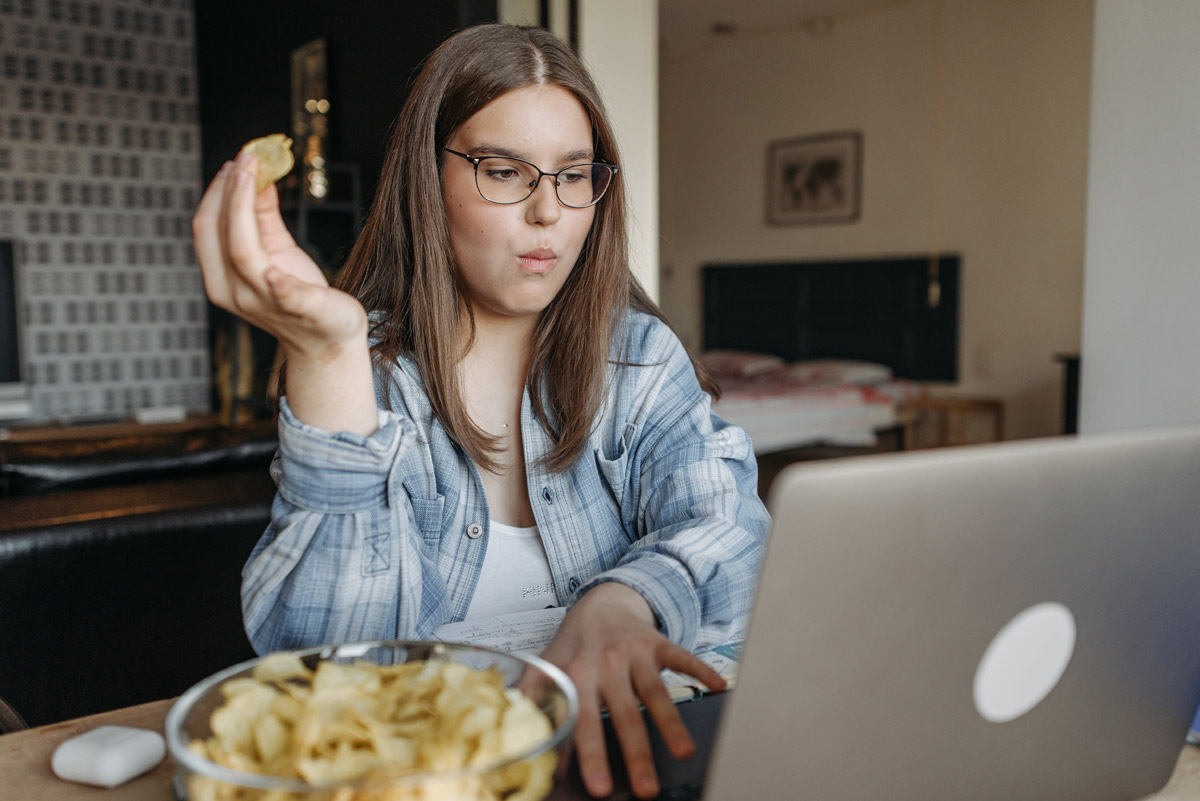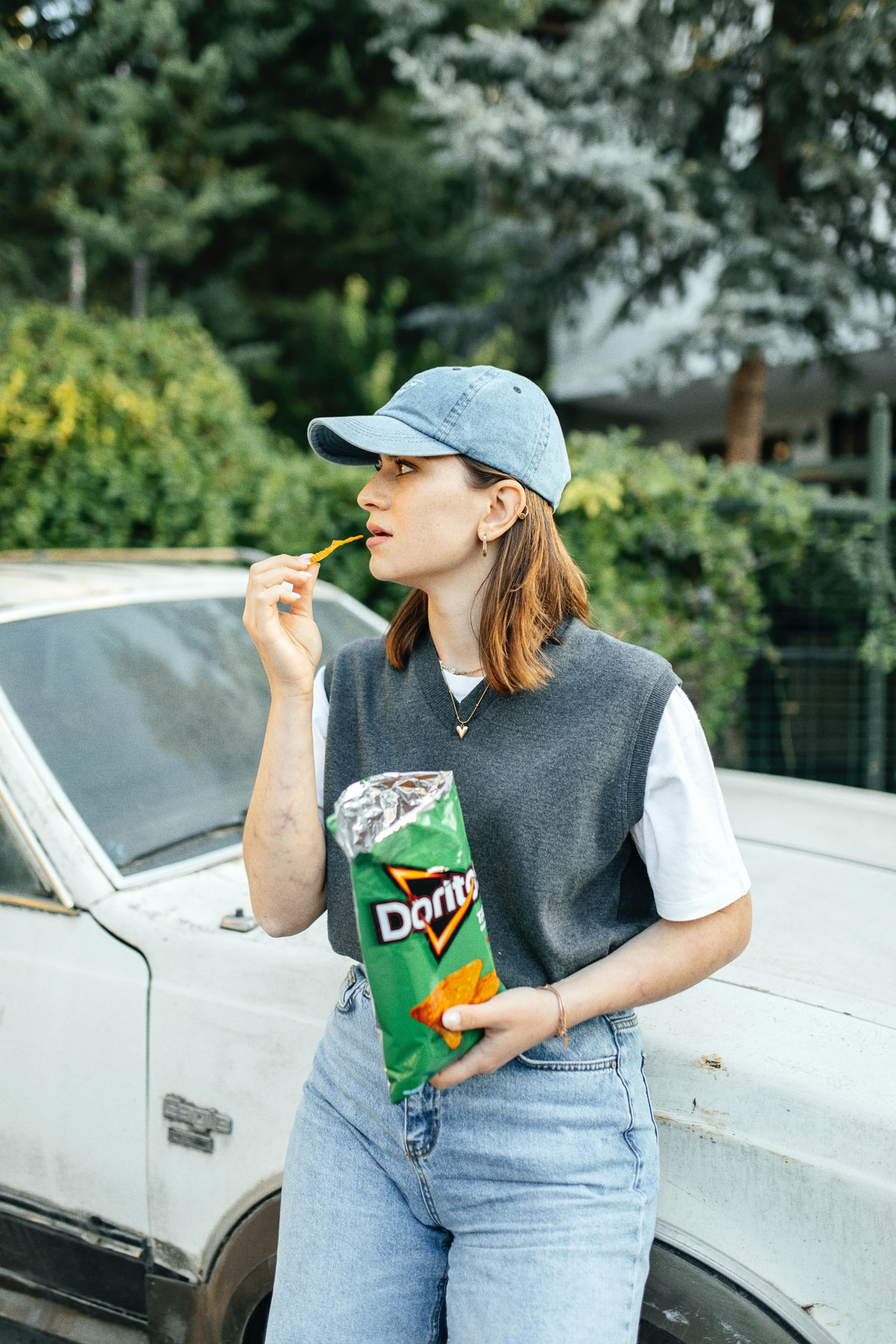ARTICLE AD

Ultra-processed food is super addictive and largely unhealthy. We all know that at this point. But the good folks at CNN thought we ought to know that its addictive quality stems in part from it being predigested. Someone’s been eating our porridge! Only instead of Goldilocks it’s the food industrial complex, and they’re breaking down staples like potatoes at the cellular level and then rebuilding the remaining slurry — that’s the manufacturing word, I’m not making this up — into the Lays chips we love. The process of destroying and remaking molecular structures, though, combined with the additives thrown in post-slurry stage, removes most of the nutritional value of the food, and disrupts the human body’s natural digestion. So why do they process food this way? Duh, because it’s cheaper! Oh, and about 73% of the US food supply is ultra-processed now. Chew on that while digesting CNN’s reporting:
The process of predigestion: To manufacture cheap, delicious food that is packaged for convenience, basic food crops such as corn, wheat and potatoes are dissembled into their molecular parts — starchy flours, protein isolates, fats and oils — or what manufacturers call ‘slurries.’ “The bulk of what is extracted is starch slurry, a milky mixture of starch and water, but we also have extracted proteins and fibers,” according to a video explanation of the process from Starch Europe, part of the European Starch Industry Association.
‘An illusion of food’: Next, with the help of artificial colorings, flavorings and glue-like emulsifiers, those slurries are then heated, pounded, shaped or extruded into any food a manufacturer can dream up. Add in just the right ratio of sugar, salt and fat designed to tickle our taste buds, and an ultra-processed food that’s nearly irresistible is born, said infectious disease specialist Dr. Chris van Tulleken, an associate professor at University College London. … “It’s an illusion of food,” he added. “But it’s really expensive and difficult for a food company to make food that is real and whole, and much cheaper for food companies to destroy real foods, turn them into molecules, and then reassemble those to make anything they want.”
Humans aren’t built like birds: Much like the regurgitated food mother birds feed their babies in the nest, ultra-processed food is quick and easy to digest, according to experts. But that’s not how the human digestive system was meant to work. Starting with teeth designed to tear food apart, the human gastrointestinal system evolved to break down whole foods into their various nutritional components, absorb those vitamins, minerals and micronutrients and then eliminate the indigestible leftovers and fiber as stool.
Skipping over stretch receptors: When food moves through the digestive system in ways Mother Nature didn’t intend, however, the body loses the ability to send a signal of fullness to the brain, said Dr. David Katz, a specialist in preventative and lifestyle medicine who founded the nonprofit True Health Initiative. “In effect you are bypassing the stretch receptor effect in the stomach,” Katz said. “Before the stretch receptors can even tell you, ‘Hey, we’ve had enough,’ you’ve put down twice as many calories as you need.”
What the frack: Breaking down the chemical and physical structure of the cells in a food, or a food’s matrix, can damage or even eliminate many of the nutrients in that food, said Anthony Fardet, a senior research scientist at the French National Institute for Agricultural Research in Paris. “By fracking food much like we frack oil, we have fully deconstructed the food matrix, and this is associated with many times higher risk of chronic disease and early mortality and a degradation of global health. … Before the Second World War, before we began using these new manufacturing processes, we never observed such a high level of chronic disease worldwide,” Fardet said.
Fighting the system: But we are paying a price, said Marion Nestle, the Paulette Goddard professor emerita of nutrition, food studies and public health at New York University, who has written books on food industry politics. “The food industry has created an eat more environment — that’s what it’s supposed to do,” Nestle said. “And it’s fun — the foods do nice things for your brain’s pleasure centers and your hormones and the like, so it’s very difficult for people to stop eating them. The other way I put it is that individuals who are trying to control their weight in today’s food environment are fighting an entire food system on their own. That’s hard to do.”
Ok, but… can I still buy the prepared meals from Trader Joe’s? I’ll confess, in my first five read-throughs of this article I was convinced that CNN was just trying to frighten us from ever eating again. And then I shifted to despondency when Professor Nestle (no relation to the food corporation, still hilarious) talked about fighting the entire system. But then I had a scathingly brilliant idea (and if you know that reference, hello you are my people). We need a reality series where contestants are given the slurry remnants of corn, wheat, and potatoes and have to turn them into real-looking food. Take the premise and earnestness of Great British Bake Off and use it to expose the industry! If Gen Z actually gets to see the slurry origins of the food they eat daily, then I have a sliver of hope they will demand change. I’ll start writing my pitch to the networks, just as soon as I finish my mint Milanos.
photos credit: Pavel Danilyuk, Esma Atak and Norma Mortenson on Pexels, Acton Crawford on Unsplash

 11 months ago
56
11 months ago
56 




